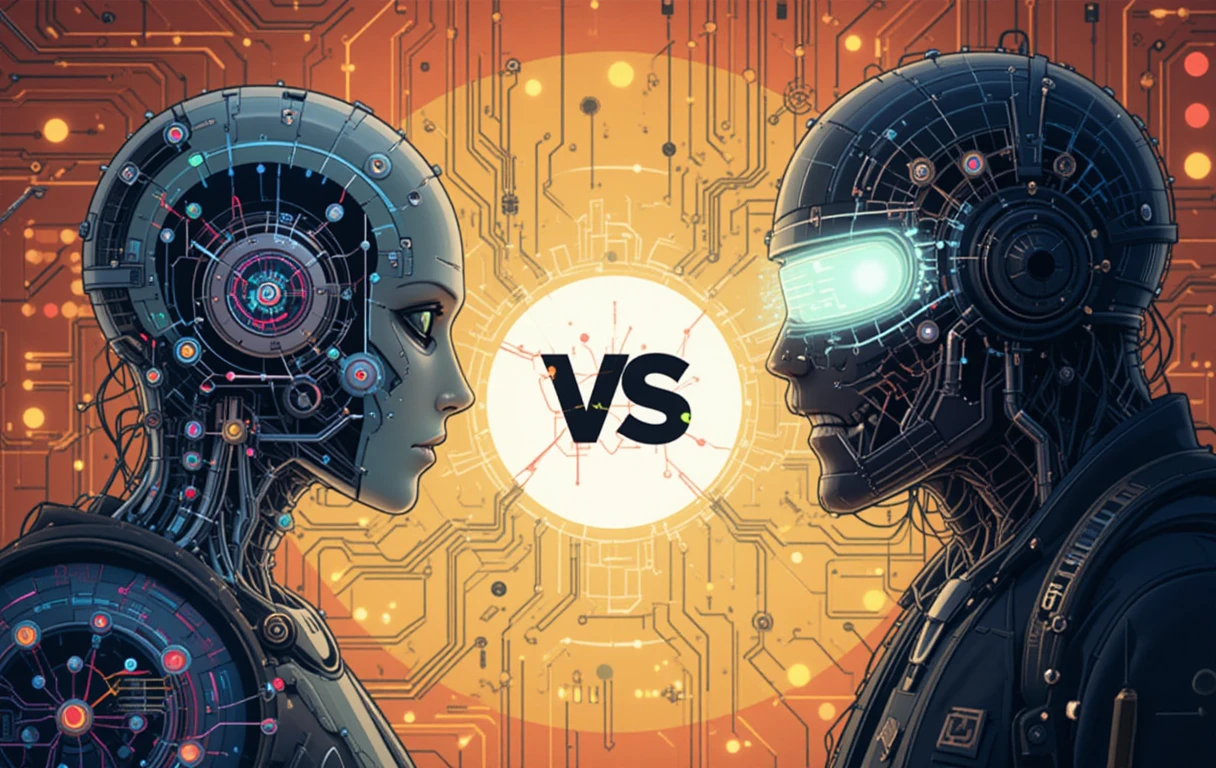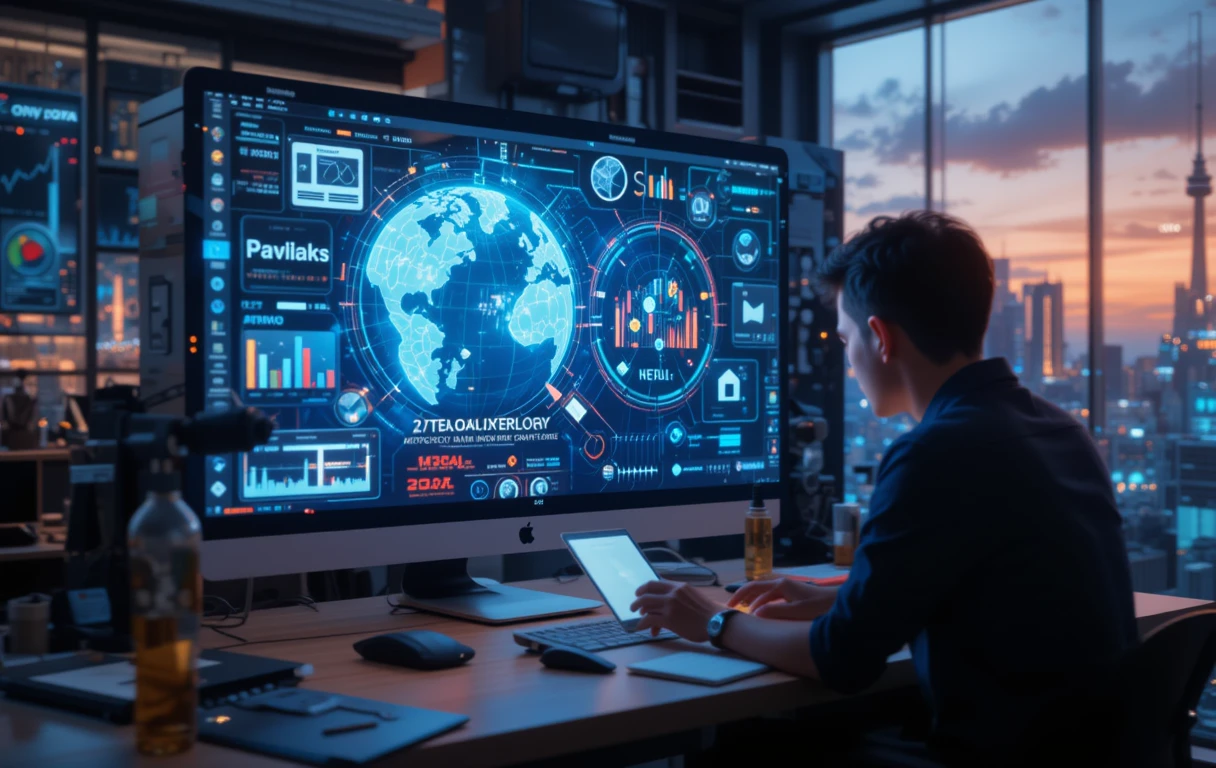In today’s rapidly evolving digital landscape, the battle between AI vs. Hackers has become a focal point of the cybersecurity industry. As cybercriminals develop more sophisticated attack methods, artificial intelligence (AI) emerges as the ultimate tool to combat these threats. This dynamic interplay between innovation and intrusion is reshaping the cybersecurity landscape and protecting our digital future.
The Cybersecurity Challenge in a Digital Age
Cybercrime has surged to unprecedented levels, with ransomware attacks, phishing schemes, and data breaches affecting millions globally. According to recent studies, the cost of cybercrime is projected to exceed $10.5 trillion annually by 2025. This alarming statistic underlines the urgent need for more robust and intelligent security solutions.
Traditional methods like firewalls and antivirus software, while still useful, are no longer enough. Enter AI, with its ability to analyze vast amounts of data, detect patterns, and respond to threats in real time.
How AI is Revolutionizing Cybersecurity
1. Real-Time Threat Detection
AI excels at identifying anomalies in network traffic and user behavior. By leveraging machine learning algorithms, it can recognize malicious patterns that would otherwise go unnoticed.
For example, an AI system can detect unusual login attempts from unfamiliar locations and alert administrators instantly. This capability significantly reduces the time it takes to respond to cyber threats.
2. Predictive Analysis and Prevention
Through predictive modeling, AI can anticipate potential cyberattacks before they occur. By studying historical data and understanding hackers’ tactics, AI algorithms can forecast vulnerabilities and help organizations bolster their defenses proactively.
3. Automation of Cybersecurity Processes
AI enables the automation of repetitive tasks like malware scanning, vulnerability assessments, and patch management. This not only saves time but also ensures that critical updates are applied without delay.
Moreover, AI-powered chatbots are now being deployed to guide users through security protocols, reducing human error—a common weak link in cybersecurity.
4. Adaptive Learning to Combat Evolving Threats
Hackers constantly evolve their techniques, and AI adapts just as quickly. With continuous learning capabilities, AI systems can refine their responses to emerging threats, ensuring that cybersecurity measures remain ahead of the curve.
AI vs. Hackers: A Never-Ending Cat-and-Mouse Game
While AI offers significant advantages, hackers are not standing idle. Cybercriminals are now using AI to launch more advanced attacks. For instance:
- AI-Generated Phishing Emails: Hackers use AI to craft highly convincing phishing emails that mimic legitimate communication.
- Automated Malware Creation: AI algorithms can generate polymorphic malware that changes its signature to evade detection.
- Adversarial Attacks: Hackers train their systems to exploit vulnerabilities in AI models, turning them against their intended purpose.
This ongoing race between AI vs. Hackers underscores the need for continuous innovation and vigilance in the cybersecurity field.
The Role of AI in Securing the Cloud
With the rise of cloud computing, securing cloud-based systems has become paramount. AI plays a crucial role here by monitoring data exchanges, identifying unauthorized access, and ensuring compliance with security standards.
Advanced AI models are now being integrated into major cloud platforms like AWS, Azure, and Google Cloud to provide an additional layer of protection.
AI in Action: Notable Success Stories
1. Stopping Ransomware in Its Tracks
In 2022, an AI system successfully intercepted a major ransomware attack targeting a healthcare provider. By analyzing the encrypted communication used by the hackers, AI flagged the threat and blocked the attack before it could spread.
2. Protecting Financial Institutions
Banks and fintech companies use AI to detect fraudulent transactions in real time. For example, when a credit card is used in an unusual location, AI systems can immediately flag or block the transaction.
Future Trends in AI and Cybersecurity
1. AI-Powered Zero-Trust Models
Zero-trust architecture is becoming a gold standard in cybersecurity. AI will play a pivotal role in verifying user identities and monitoring access points without assuming inherent trust.
2. Quantum Computing Challenges
While AI fortifies cybersecurity, quantum computing presents new challenges. Hackers could eventually use quantum systems to crack encryption faster than ever before. AI will need to evolve to counteract these advancements.
3. Ethical AI in Cybersecurity
Ensuring that AI systems operate transparently and ethically is critical. Developers must ensure that AI algorithms do not inadvertently favor certain users or leave others vulnerable.
Conclusion
The ongoing battle of AI vs. Hackers is shaping the future of cybersecurity. While hackers continuously innovate, AI stands as a powerful ally in safeguarding sensitive information, securing networks, and mitigating risks. The key to staying ahead lies in embracing AI technologies, fostering collaboration among experts, and staying informed about emerging threats.
By leveraging AI responsibly and proactively, businesses and individuals can create a safer digital world where innovation thrives, and cybercrime dwindles.




